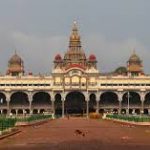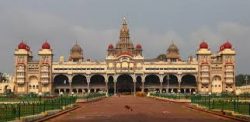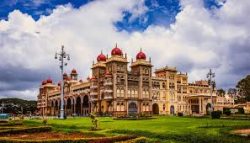Exploring the Magnificence of KRS Dam: A Triumph of Engineering and Nature
the picturesque landscapes of Karnataka, the Krishna Raja Sagara (KRS) Dam stands as a testament to human ingenuity and the harmonious coexistence of man and nature. Let’s embark on a journey to discover the captivating beauty and significance of the KRS Dam, a marvel of engineering and a lifeline for the region.
Engineering Marvel
The KRS Dam, located near the city of Mysore, is a masterpiece of engineering that serves multiple purposes, including irrigation, hydroelectric power generation, and water supply. Built across the Cauvery River in the early 20th century, the dam’s imposing structure spans over 3 kilometers and stands as a symbol of human achievement in harnessing the power of water for societal benefit.
Water Management
One of the primary functions of the KRS Dam is to regulate the flow of the Cauvery River and manage water resources for irrigation purposes. The dam’s reservoir, formed by impounding water behind its massive concrete walls, serves as a crucial source of water for agricultural lands downstream, ensuring the sustenance of crops and livelihoods for thousands of farmers in the region.
Hydroelectric Power
In addition to irrigation, the KRS Dam also contributes to the generation of hydroelectric power, harnessing the kinetic energy of flowing water to produce electricity. The dam’s power station, equipped with turbines and generators, converts the force of falling water into electrical energy, providing a clean and renewable source of power for the surrounding areas.
Tourist Attraction
Beyond its functional significance, the KRS Dam is also a popular tourist attraction, drawing visitors from far and wide to admire its grandeur and scenic beauty. The dam’s sprawling reservoir, surrounded by lush greenery and rolling hills, offers a serene backdrop for picnics, boating, and leisurely walks along the waterfront. Visitors can also explore the dam’s architectural marvels, including its intricate spillway gates and panoramic viewpoints that offer breathtaking views of the surrounding landscape.
Historical Significance
The construction of the KRS Dam holds immense historical significance, marking a milestone in the development of water infrastructure in India. Built during the reign of Maharaja Krishna Raja Wadiyar IV of Mysore, the dam was a visionary project aimed at harnessing the potential of the Cauvery River for the benefit of agriculture, industry, and society. Today, the KRS Dam stands as a proud symbol of Karnataka’s engineering prowess and a legacy of foresight and innovation.
Environmental Impact
While the KRS Dam has brought immense benefits to the region in terms of water supply and irrigation, it has also had a significant impact on the local ecosystem. The construction of the dam has altered the natural flow of the Cauvery River, leading to changes in sedimentation patterns, aquatic habitats, and downstream ecosystems. Efforts are underway to mitigate these impacts through sustainable water management practices and conservation initiatives.
Conclusion: A Triumph of Nature and Technology
In conclusion, the Krishna Raja Sagara (KRS) Dam represents a harmonious blend of nature and technology, serving as a lifeline for the region while also showcasing the beauty and resilience of the natural world. As a testament to human ingenuity and the power of collaboration, the KRS Dam stands as a timeless symbol of progress, sustainability, and the enduring bond between man and nature.































































https://www.zupyak.com/u/Prestige-City-Hyderabadl/posts
https://forums.bohemia.net/forums/topic/287246-discussing-modding-and-custom-content-in-arma-3/
https://raindrop.io/prestigecityhyderabadj/prestige-city-hyderabad-living-43885832
https://www.sutori.com/en/user/prestige-city-hyderabad
https://www.livelib.ru/reader/CityHyderabad
https://jobs.blooloop.com/employers/401ad2b8-d61e-4efc-89a4-d3a476f33a45
https://original.misterpoll.com/users/5428024
https://mastodon.nl/@prestigeciatyhyderabadu
https://platform.blocks.ase.ro/user/profile.php?id=8135
https://forum.blu-ray.com/member.php?u=915618
https://jobs.motionographer.com/employers/3072501-prestige-city-hyderabad-review
https://wallpapercave.com/u/prestigecityhyabadf